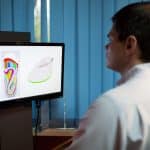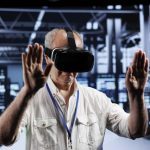In an era where technology continues to revolutionize our world, one area that’s received significant attention is the Internet of Things (IoT). IoT, as a concept, revolves around the idea of integrating various devices and systems with internet connectivity to form a complex network. These networks are then used to streamline processes, improve efficiency, and make life more convenient.
However, the reality is that IoT hasn’t been fully utilized, especially in rural areas of the UK. This is primarily due to limitations in network coverage and data processing capabilities. This is where edge computing comes in. Edge computing is a distributed computing paradigm that brings computation and data storage closer to the devices where it’s being gathered, rather than relying on a central location that can be miles away. This technology is now starting to enhance the performance of IoT in rural UK regions, and this article will delve into the ways in which this is happening.
Lire également : What’s the Latest in Organic Light-Emitting Transistors for Flexible Electronics?
The Role of Edge Computing in IoT Performance
To fully understand how edge computing enhances IoT performance, it is crucial to first understand what edge computing entails. As earlier mentioned, edge computing involves bringing data storage and computation closer to the devices where it’s being gathered. This means that data is processed at the ‘edge’ of the network, near the source of the data. This is a departure from the traditional approach where data is sent to a centralized data-processing warehouse.
For IoT devices, this is particularly beneficial. It reduces the latency in data processing and transmission, ensuring that these devices can run smoothly and respond in real-time. Furthermore, by processing data locally, edge computing also aids in reducing bandwidth usage, which is particularly beneficial in rural areas where network coverage can be spotty.
Sujet a lire : How Is AI Being Used to Personalize E-Learning for University Students in the UK?
How Advances in Edge Computing are Affecting Rural IoT Performance
In rural areas of the UK, edge computing is starting to make a significant impact on the performance of IoT. This is being facilitated through several key advancements in the technology.
Firstly, we’re seeing improvements in edge data centers. These are small-scale data centers that are strategically located in rural areas to provide local processing power. They are designed to be compact, efficient, and capable of withstanding harsh environmental conditions. This makes them ideal for deployment in remote locations where network connectivity is limited.
Secondly, there’s been a significant advance in edge computing software. This software is designed to manage and orchestrate the many edge computing devices within a network. The software ensures that these devices are operating optimally, mitigating any potential issues that could affect the performance of the IoT devices connected to them.
The Impact of Edge Computing on Rural IoT Applications
As edge computing becomes more prevalent, we’re beginning to see a shift in the way IoT applications are being designed and implemented, especially in rural areas. Previously, the limited network coverage and data processing capabilities in these areas meant that IoT applications were often rudimentary and limited in scope. However, with the advent of edge computing, this is starting to change.
Farmers, for instance, are now able to leverage IoT applications for precision agriculture. These applications can monitor soil conditions, weather patterns, and crop health in real-time, providing farmers with invaluable data that can help increase yield and profitability.
Similarly, in the healthcare sector, edge computing is facilitating the development of remote patient monitoring systems. These systems enable healthcare providers in rural areas to monitor patient vitals and provide timely care, even if they are miles away from the nearest hospital.
The Future of Edge Computing and IoT in Rural UK
Looking ahead, the intersection of edge computing and IoT holds immense promise for rural areas in the UK. As advancements continue to be made in both fields, we can expect to see even more sophisticated IoT applications being developed.
Specifically, we can expect to see greater integration between edge computing and 5G connectivity. This combination will allow for high-speed data transmission, further reducing latency and enhancing the performance of IoT devices. Additionally, as more powerful and efficient edge data centers are developed, IoT applications will become even more capable.
Even though this article does not provide a conclusion, it highlights the transformative power of edge computing in enhancing IoT performance in rural UK areas. The role of this technology is not just limited to improving network coverage and data processing capabilities. Rather, it’s about empowering rural communities, enabling them to harness the power of IoT to improve their livelihoods and solve real-world problems. This is a testament to the potential of edge computing and a clear indication of its pivotal role in shaping the future of IoT.
The Challenges and Solutions in Implementing Edge Computing in Rural UK
In the integration of edge computing and IoT in rural areas of the UK, several challenges have emerged. Primarily, these challenges are based around the infrastructure required for edge computing in such regions. However, advancements in the technology are providing solutions to these challenges, promising a brighter future for IoT performance in these areas.
One of the primary challenges is the lack of reliable high-speed internet in rural areas. Edge computing requires reliable internet connectivity for optimal performance. However, in many rural areas, the internet coverage can be spotty, and connectivity speeds can be slow. This limits the functionality of IoT devices and the potential benefits that can be derived from them.
To combat this, advancements have been made in creating edge data centers that do not rely heavily on internet connectivity. These centers are designed to operate optimally even in areas with limited internet coverage, ensuring that IoT devices remain functional and effective.
Another challenge is the harsh environmental conditions in rural areas. These conditions can affect the performance of edge computing equipment and shorten its lifespan. However, researchers and developers are addressing this by designing rugged edge data centers that can withstand harsh environmental conditions, ensuring their longevity and reliability.
Conclusion: The Transformative Power of Edge Computing in Rural UK
The advent of edge computing in enhancing IoT performance in rural UK areas is indeed a game-changer. It promises to revolutionize the way rural communities operate, improving their efficiency, and solving real-world problems.
The role of edge computing goes beyond mere technological advancement. It’s about empowering these communities, providing them the tools necessary to improve their livelihoods dramatically. It’s about bridging the digital divide and ensuring that everyone, regardless of their location, can benefit from the advancements in technology.
Despite the challenges, the future looks bright for edge computing and IoT in rural UK areas. With continued research and development, as well as strategic implementation of the technology, rural communities in the UK stand to reap immense benefits. From agriculture to healthcare, education to local governance, edge computing stands to transform numerous sectors. It is truly a testament to the transformative power of technology and its potential in creating a better future for all.
In conclusion, edge computing is revolutionizing IoT performance in rural UK areas, despite the challenges. It is empowering these communities and promising a brighter, more efficient future. The potential of this technology is immense, and as advancements continue to be made, we can only expect it to become even more transformative.











